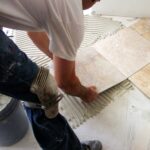Don Vandervort’s guide will teach you how to prioritize house projects, ensuring that you get the most important projects done first. Learn about the different factors to consider when prioritizing house projects, and how to create a plan for tackling your house projects.
As a family man and do-it-yourselfer, I’ve learned that one inevitable component of home ownership is the “honey-do” or do-it-yourself list.
In fact, with our 65-year-old house, checking tasks off my list could easily consume every weekend—and the list would never grow shorter.
Of course, there is more to life than fixing flapper valves and fussing with fuses, so my top priority has become to set my top priorities.
Actually, this isn’t as confusing as it sounds. The idea is to spend time on the projects that will produce the most important benefits. Being clear about what those benefits are is key. This gives you the information you need to prioritize a honey-do list.
In broad terms, the list should begin with needs and move on to wants. Begin with projects that protect your family and your house’s structure, then do things that add comfort and save money, and last, handle projects that are more discretionary in nature.
Here is a good way to prioritize your home improvement projects:
1. First handle any to-do item that could affect your family’s safety. For example, make sure your home has working smoke alarms. And be sure to childproof your home if you have little ones in the house.
2. Repair any problem that interrupts the use of your home or threatens to cause permanent damage. If rainwater is dripping from the ceiling, repair the roof. Otherwise, the water will ruin your ceiling, damage the floor, and ultimately undermine your home’s structure. Similarly, if your pipes freeze, take the necessary steps to thaw them out.
3. Eliminate any potential long-term health hazards that your home may present. If you have concerns about the safety of your drinking water, the quality of your air, or the presence of asbestos or lead in your home, take steps to alleviate the problems.
4. Handle maintenance that will protect your house from long-term damage. Jobs in this category include painting the house, installing new roofing, and making your basement a drier place.
5. Make upgrades that will ultimately save you money. Projects that reduce energy and water consumption fall into this category.
6. Make relatively easy, low-cost improvements that offer significant results. You can stretch your improvement dollars with high-impact efforts, such as painting, wallpapering, and changing fixtures.
7. Polish off repairs that have a big nuisance factor—faulty doorknobs, squeaky floors, dripping faucets, and the like. The sooner you fix these things, the happier everyone in the household will be.
8. Take care of cosmetic repairs. Fix that hole in the wall, replace the outdated light fixture, and repair the moldings.
9. Do more involved improvements that will add to your home’s value. Some major remodeling projects offer a much higher return on investment than others.
10. Build yourself a hammock and rest up before you receive your next honey-do list.








 Don Vandervort writes or edits every article at HomeTips. Don has:
Don Vandervort writes or edits every article at HomeTips. Don has:




